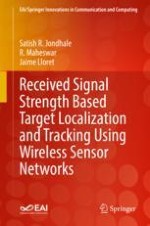2022 | OriginalPaper | Buchkapitel
2. Target Localization and Tracking Using WSN
verfasst von : Satish R. Jondhale, R. Maheswar, Jaime Lloret
Erschienen in: Received Signal Strength Based Target Localization and Tracking Using Wireless Sensor Networks
Aktivieren Sie unsere intelligente Suche, um passende Fachinhalte oder Patente zu finden.
Wählen Sie Textabschnitte aus um mit Künstlicher Intelligenz passenden Patente zu finden. powered by
Markieren Sie Textabschnitte, um KI-gestützt weitere passende Inhalte zu finden. powered by
